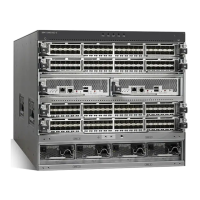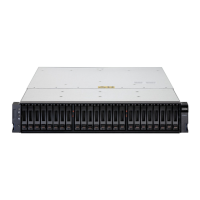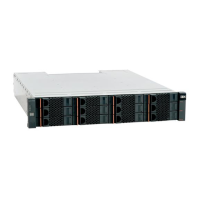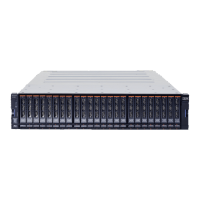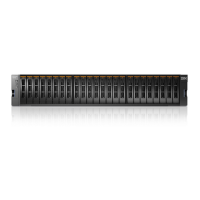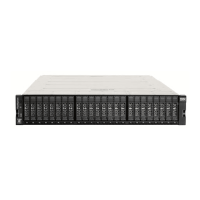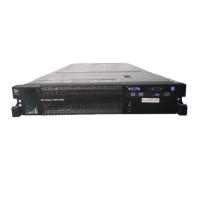• The rack or cabinet must be compatible with the drawer-mounting rails. The rail-mounting pins and
screws must t securely and snugly into the rack or cabinet rail-mounting holes. The mounting rails
and mounting hardware that are provided with IBM products are designed and tested to safely support
the product during operation and service activities, and to safely support the weight of your drawer
or device. The rails must facilitate service access by allowing the drawer to be safely extended,
if necessary, forward, backward, or both. Some rails, with IBM features for non-IBM racks, provide
drawer-specic anti-tip brackets, rear lock-down brackets, and cable management guides that require
clearance on the rear side of the rails.
Note: If the rack or cabinet has square holes on the mounting flanges, an adapter might be required.
• The rack or cabinet must have stabilization feet or brackets that are installed in the front of the rack, or
have another means of preventing the rack or cabinet from tipping while the drawer or device is pulled
into its extreme front service positions.
Note: Examples of some acceptable alternatives: The rack or cabinet might be securely bolted to the
floor, ceiling or walls, or to adjacent racks or cabinets in a long and heavy row of racks or cabinets.
• If present, front and rear doors must be able to open far enough to provide unrestrained access for
service or be easily removable. If doors must be removed for service, it is the responsibility of the
customer to remove them before service.
• Front and rear doors must not violate the previously dened front and rear rack space that is required
for the system.
• The rack or cabinet must provide adequate front-to-back ventilation.
Note: Rack doors must be fully perforated to provide proper front-to-back airflow for mounted
information technology (IT) equipment. The total door area must result in a minimum of 45% opening
area. Rear doors must not create back pressure that can interfere with the server fan operation.
General safety requirements for IBM products installed in a non-IBM rack or cabinet
The general safety requirements for IBM products that are installed in non-IBM racks are:
• Any product or component that plugs into either an IBM power distribution unit or main power (by
using a power cord), or uses any voltage over 42 V AC or 60 V DC (considered as hazardous voltage)
must be Safety Certied by a Nationally Recognized Test Laboratory (NRTL) for the country in which it is
installed.
Some of the items that require safety certication might include the rack or cabinet (if it contains
electrical components integral to the rack or cabinet), fan trays, power distribution unit, uninterruptible
power supplies, multi-outlet strips, or any other products that are installed in the rack or cabinet that
connect to hazardous voltage.
Examples of OSHA-approved NRTLs for the US:
– UL
– ETL
– CSA (with CSA NRTL or CSA US mark)
Examples of approved NRTLs for Canada:
– UL (Ulc mark)
– ETL (ETLc mark)
– CSA
The European Union requires a CE mark and a Manufacturer's Declaration of Conformity (DOC).
Certied products must have the NRTL logos or marks somewhere on the product or product label.
However, proof of certication must be made available to IBM upon request. Proof consists of such
items as copies of the NRTL license or certicate, a CB Certicate, a Letter of Authorization to apply the
NRTL mark, the rst few pages of the NRTL certication report, Listing in an NRTL publication, or a copy
of the UL Yellow Card. Proof should contain the manufacturers name, product type, and model, standard
38
IBM Storage ScaleSystem Utility Node: Hardware Planning and Installation Guide

